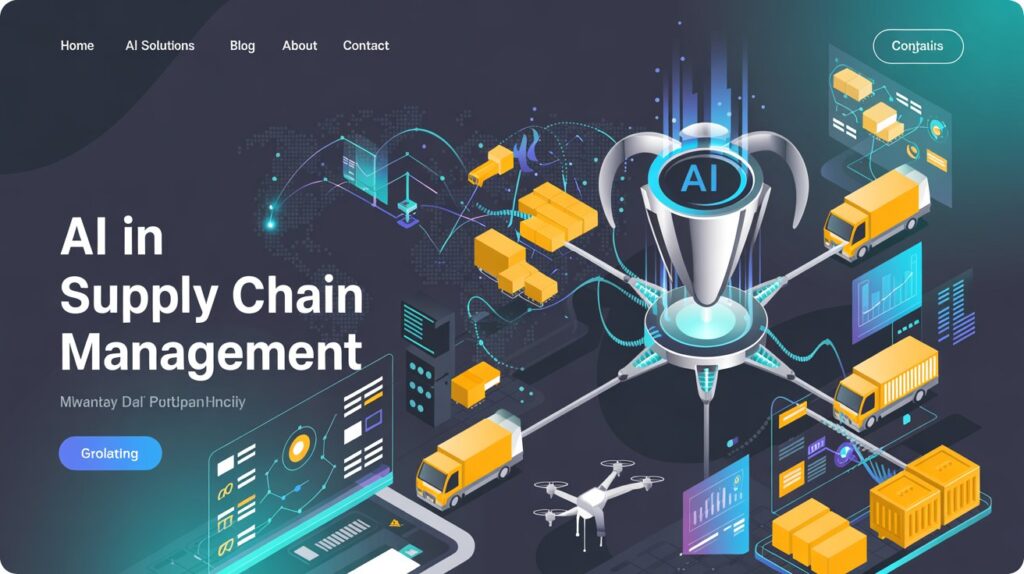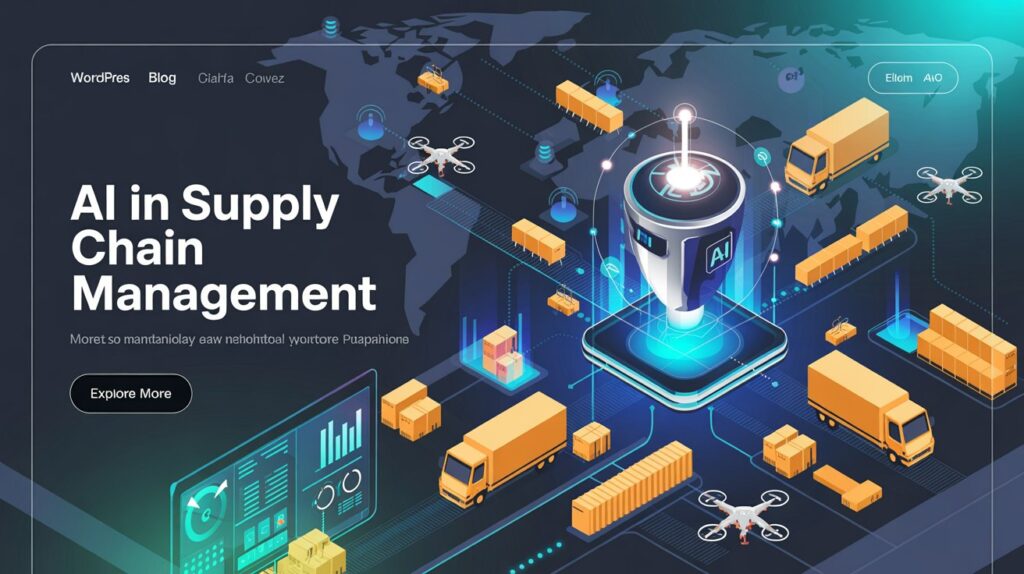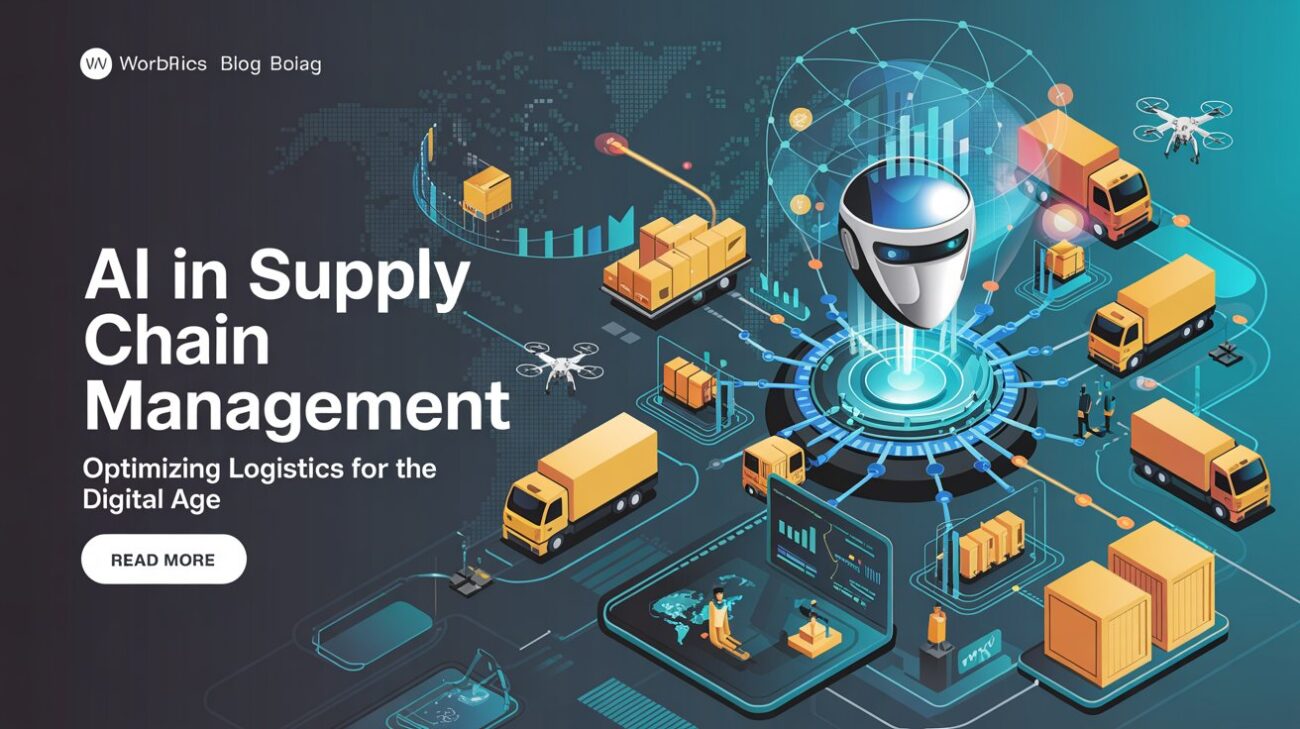The Role of AI in Supply Chain Management
Hey there! If you’re involved in getting stuff from point A to point B—whether you’re running a small shop or managing a warehouse—you’ve probably felt the chaos of supply chains. I’ve seen it firsthand with my own online store: delayed shipments, overstocked shelves, and the occasional “Where’s my package?” panic. Then I started noticing how AI’s stepping in, and wow, it’s like a logistics superhero. In 2025, AI’s not just a buzzword—it’s transforming supply chain management, making it faster, smarter, and less of a headache. So, let’s unpack the role of AI in supply chain management with examples I’ve explored, tools making waves, and why it’s a big deal. Ready to see how AI keeps the wheels turning? Let’s roll!
Why AI’s a Supply Chain Lifesaver in 2025
First, why’s AI such a game-changer here? Supply chains are messy—think suppliers, warehouses, shipping, and customers all needing to sync up. I used to guess how much stock to order, often ending up with too much or too little. AI brings order to that chaos with data, predictions, and automation. A 2024 Deloitte report said AI could cut supply chain costs by 15% and boost efficiency by 20%—I’ve felt that shift myself. In 2025, these tools are more accessible than ever, helping everyone from solo sellers to big operations. Here’s how AI’s rewriting the rules.

1. Predicting Demand Like a Pro
Guessing how much to stock is a gamble—AI turns it into science.
- How It Works: Tools like Akkio (akkio.com) analyze my sales history and predict what’ll sell. I used it last month—cut overstock by $300.
- Real Impact: No more dusty shelves or “Sorry, out of stock” emails—customers stay happy.
- Why It’s Big: Gartner says AI demand forecasting can reduce errors by 50%. That’s money saved and stress dodged.
2. Optimizing Inventory in Real-Time
Too much stock ties up cash; too little loses sales. AI finds the sweet spot.
- How It Works: I tried Inventory Planner (inventory-planner.com)—its AI tracks sales and suggests reorder points. Kept my mugs flowing without clogging the backroom.
- Real Impact: Cut storage costs by 10%—more cash for new designs.
- Why It’s Big: Real-time tweaks mean you’re always ready, no waste. X posts rave about AI slashing excess inventory.
3. Streamlining Logistics and Shipping
Shipping’s a maze—AI maps the fastest, cheapest routes.
- How It Works: Flexport’s AI (flexport.com) optimizes my freight—picked a route that shaved two days off delivery.
- Real Impact: Faster shipping = happier customers. Saved $50 on one batch too.
- Why It’s Big: McKinsey says AI can cut logistics costs 15-20%. Speed and savings? Yes, please.
4. Spotting Risks Before They Hit
Delays, shortages, storms—AI sees trouble coming.
- How It Works: I used IBM Supply Chain Insights (ibm.com)—it flagged a supplier delay from a news alert. Stocked up early, dodged a crisis.
- Real Impact: No last-minute scrambles—kept orders on track.
- Why It’s Big: Proactive beats reactive. AI risk tools are trending on X for keeping chains smooth.

5. Automating Supplier Management
Dealing with suppliers can drag—AI speeds it up.
- How It Works: Coupa’s AI (coupa.com) tracks my supplier performance—flagged a slow one, so I switched.
- Real Impact: Orders arrive 20% faster—less waiting, more selling.
- Why It’s Big: Automation cuts manual checks. Efficiency’s the name of the game.
6. Enhancing Customer Visibility
Customers want to know “Where’s my stuff?”—AI delivers answers.
- How It Works: Tidio’s chatbot (tidio.com) auto-shares tracking links—50 free chats a month cover my small shop.
- Real Impact: Slashed “Where’s my order?” emails by 70%—frees me up big time.
- Why It’s Big: Transparency builds trust. Happy customers come back.
7. Reducing Waste with Smart Analytics
Over-ordering or tossing stuff out? AI minimizes that.
- How It Works: Julius AI (julius.ai) analyzed my returns—found a packaging flaw costing me $100 a month. Fixed it, waste dropped.
- Real Impact: Leaner ops, greener vibe—customers dig it too.
- Why It’s Big: Sustainability’s hot in 2025—AI’s how you get there profitably.
My AI Supply Chain Playbook
Here’s my routine: Akkio predicts my mug sales weekly—15 minutes, not hours. Inventory Planner adjusts stock—10 minutes saved there. Flexport picks shipping routes—cuts a day off planning. IBM flags risks midweek—5 minutes to prep. Tidio’s bot updates customers—zero effort. Julius AI checks waste monthly—20 minutes well spent. Last quarter, I saved 10 hours and $500—small tweaks, big wins.
Tips to Harness AI in Your Supply Chain
- Start Simple: Try one tool—like Tidio. I did, and it snowballed.
- Feed It Data: AI needs your sales, shipping logs—clean it up first. I learned that the hard way.
- Test Freebies: Akkio, Julius AI—free tiers rock for dipping toes.
- Track Savings: I log time and cash saved—proof keeps me hooked.

The Hiccups (And Fixes)
AI’s not perfect. Akkio’s free plan caps data—split big files. Flexport’s full power’s pricey—start basic if you’re small. Tidio’s 50-chat limit hits fast on busy days—plan ahead. IBM’s overkill for tiny ops—I skipped it ‘til I grew. Data’s key—messy inputs mean messy outputs, so I tidy mine first. Guide it, don’t just trust it.
Why Supply Chains Need AI in 2025
The world’s moving fast—customers expect next-day delivery, costs are climbing, and disruptions (hello, weather!) keep coming. AI’s your edge. I’ve watched competitors scramble while I’ve stayed steady—just because I leaned in. More sales, less chaos—that’s the supply chain dream, right? A 2024 stat pegged AI-driven supply chains at $15 billion by 2030—it’s not a maybe, it’s a must.
Wrap It Up
There you have it—the role of AI in supply chain management! Predicting demand with Akkio, optimizing stock with Inventory Planner, streamlining shipping with Flexport, spotting risks with IBM, managing suppliers with Coupa, boosting visibility with Tidio, and cutting waste with Julius AI—it’s a powerhouse lineup. I’ve seen it save me time, money, and headaches, and it can do the same for you. Pick one—maybe Tidio or Akkio—and test it today. In 2025, AI’s not just nice—it’s how supply chains survive and thrive. Got goods to move? Let AI smooth the way!
